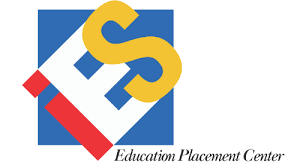Study in United States from Malaysia

Dreaming of pursuing your studies in one of the most prestigious education destinations in the world? Studying in the United States gives you access to globally recognised universities, diverse learning environments, and countless opportunities to develop both academically and personally.
At Inquota, we help Malaysian students take the next step towards a world-class education. From selecting the right course and university to guiding you through the United States student visa application, our expert counsellors make the entire process simple, transparent, and stress-free.
Benefits of Studying in the United States
The United States remains a top destination for international students because of its unmatched academic excellence and innovation.
Here are some of the top reasons why thousands of Malaysians choose to study in the United States each year:
- World-class universities and research facilities – The US is home to eight of the world’s top ten universities, offering leading programmes in technology, business, and the sciences.
- Diverse and inclusive environment – Students from all over the world come together, creating a multicultural and welcoming campus experience.
- Flexible academic pathways – Choose from thousands of degrees, minors, and electives to build a study plan that suits your career goals.
- Opportunities for research and internships – Many universities offer on-campus jobs, paid internships, and research assistant positions.
- Career advancement and global recognition – A US qualification strengthens your CV and gives you an edge in both local and international job markets.
Top Universities in the United States and Their States
Choosing the right university is one of the most important steps when planning to study abroad. Here are some of the most reputable US institutions that attract international students from Malaysia:
- Harvard University – Located in Massachusetts, Harvard is known for its excellence in law, business, and medicine.
- Stanford University – Based in California, Stanford is a global leader in engineering, computer science, and innovation.
- Massachusetts Institute of Technology (MIT) – Situated in Massachusetts, MIT is famous for its technology, science, and research programmes.
- University of California, Berkeley – A top public university in California with strong programmes in business and engineering.
- Columbia University – Located in New York, known for journalism, architecture, and social sciences.
- University of Chicago – Based in Illinois, recognised for economics, data science, and research excellence.
- Yale University – In Connecticut, Yale offers prestigious programmes in law, arts, and humanities.
- Princeton University – Situated in New Jersey, well known for mathematics, physics, and liberal arts.
- University of Michigan – In Michigan, it’s one of the best for business, public policy, and healthcare studies.
- University of California, Los Angeles (UCLA) – Located in California, offering a diverse range of programmes in film, engineering, and life sciences.
Each university offers a unique environment, excellent academic support, and opportunities to collaborate with global leaders in various fields.
Popular Courses to Study in the United States

When you study in the US, you can choose from thousands of accredited programmes. Some of the most in-demand courses among students include:
- Business and Management – Specialisations such as finance, entrepreneurship, and international business.
- Computer Science and Information Technology – AI, cybersecurity, data analytics, and software development.
- Engineering – Civil, mechanical, electrical, and aerospace engineering programmes with global recognition.
- Health and Biomedical Sciences – Nursing, biotechnology, and public health.
- Arts and Design – Film, graphic design, music, and fashion.
- Social Sciences and Humanities – Psychology, sociology, communication, and political science.
Whether you want to pursue undergraduate, postgraduate, or doctoral studies, there’s a course designed to help you achieve your professional goals.
Cost of Studying in the United States
Studying in the US is an investment in your future. The total cost depends on your university, course, and location. Here’s a general breakdown:
- Tuition Fees
- Public universities: USD 20,000 – 35,000 per year
- Private universities: USD 35,000 – 55,000 per year
- Living Expenses
- Accommodation, food, and transportation: USD 10,000 – 18,000 per year
- Health insurance and personal expenses: USD 2,000 – 4,000 per year
- Total Estimated Annual Cost: USD 30,000 – 60,000
Many universities offer scholarships and financial aid for international students, and our counsellors can help you identify opportunities that match your profile.
Intakes for Studying in the United States
US universities typically offer three main intakes each year:
- Fall Intake (August–September) – The most popular intake, with the widest selection of programmes and scholarships.
- Spring Intake (January–February) – Ideal for students who need more time to prepare their applications or English proficiency tests.
- Summer Intake (May–June) – Limited course availability, often focused on short-term or specialised programmes.
It’s recommended to begin your application process at least 6–12 months before your intended intake to secure your place and complete all visa and documentation requirements on time.
Post-Study Work Opportunities in the United States
After completing your degree, international students have the chance to gain valuable work experience through various visa programmes.
- Optional Practical Training (OPT): Allows F-1 visa holders to work in the US for up to 12 months after graduation.
- STEM OPT Extension: Students in STEM (Science, Technology, Engineering, and Mathematics) fields can extend their OPT for an additional 24 months.
- H-1B Visa Pathway: After OPT, graduates may qualify for employment sponsorship under the H-1B visa category.
These opportunities enable students to apply their academic knowledge in real-world settings and build international experience before returning to Malaysia or pursuing long-term career plans abroad.
Why You Need an Education Consultant
Applying to study in the US involves several stages, this is from university selection to visa submission. Each requiring careful preparation and documentation. As a trusted education consultant we can help:
- Personalised university recommendations based on your grades, budget, and goals.
- Expert guidance on visa applications including DS-160, SEVIS fee, and interview preparation.
- Assistance with SOPs, essays, and reference letters to strengthen your application.
- Pre-departure briefings covering accommodation, travel, and arrival tips.
- Continuous support even after you start your studies in the US.
With years of experience helping Malaysian students successfully obtain their United States student visa, we simplify the process and ensure every step is handled with accuracy and care.
Begin Your Journey to Study in the United States with Inquota
Take the first step towards a world of academic excellence and career opportunities. Our team at Inquota is ready to guide you through every stage of the process.
We offer a free consultation and eligibility check, comprehensive assistance with university and visa applications, and ongoing support for every student we work with. Trusted by hundreds of aspiring international students, we take pride in helping you achieve your study abroad goals with confidence and clarity.
Start your journey to study in the United States today. Contact us or fill out our enquiry form to book your free consultation, and let us help you turn your dream into reality.
What Students Say About Our Guidance and Support
Hello, I would like to share that Edmund from IES has been really helpful with my applications. PhD applications are tedious especially with finding supervisors, making sure i meet requirements and getting responses from universities. Honestly, the application journey has been tough for me as I need to meet certain requirements for my sponsor. His assistance made me feel like there is hope and to not give up :’)
Nurul NajwaClient
Great Experience! Very helpful and knowledgeable staff. They guided me through every step and made sure I got into the right school. Highly recommend their services!
Yu ZhongyuClient
This agency made the entire application process smooth and stress-free. The team is professional, supportive, and truly cares about students’ success. Thank you for your excellent service!
於你Client
FAQs About Studying in United States
What are the main requirements for a US student visa from Malaysia?
Applicants need to be accepted by a SEVP-certified US school, enrol full-time, demonstrate sufficient funds, and prove English proficiency.
How long does the visa application process usually take?
It varies by appointment availability, but you should apply early (ideally several months before your course start).
Can I work while studying in the US?
Yes, on an F-1 student visa you may work on campus and after one academic year you may apply for training programmes such as Optional Practical Training (OPT).
What happens if my visa is denied?
You can reapply if you can provide additional evidence or clarify your intent. Interview preparation is key to improve success chances.
When can I enter the US before my programme starts?
Students on F or M visas are allowed to enter up to 30 days before the programme start date.
